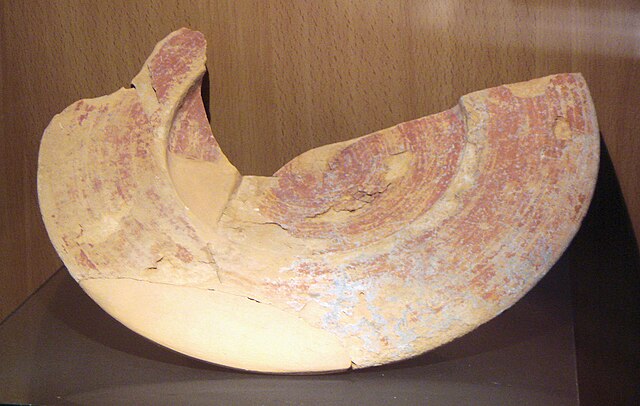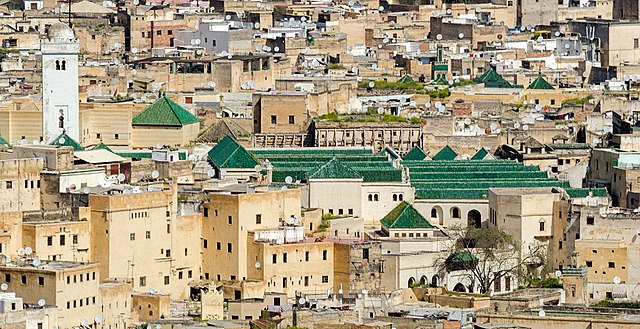The history of human habitation in Morocco spans since the Lower Paleolithic, with the earliest known being Jebel Irhoud. Much later Morocco was part of Iberomaurusian culture, including Taforalt. It dates from the establishment of Mauretania and other ancient Berber kingdoms, to the establishment of the Moroccan state by the Idrisid dynasty followed by other Islamic dynasties, through to the colonial and independence periods.
Phoenician plate with red slip, 7th century BCE, excavated on Mogador Island, Essaouira. Sidi Mohammed ben Abdallah Museum.
Roman coins excavated in Essaouira, 3rd century.
Roman remains of Volubilis
Idrisid dirham, minted at al-'Aliyah (Fes), Morocco, 840 CE. The coin features the name of Ali: a son-in-law of Muhammad, the fourth Caliph, and an ancestor of the Idrisids.
University of al-Qarawiyyin
The University of al-Qarawiyyin, also written Al-Karaouine or Al Quaraouiyine, is a university located in Fez, Morocco. It was founded as a mosque by Fatima al-Fihri in 857–859 and subsequently became one of the leading spiritual and educational centers of the Islamic Golden Age. It was incorporated into Morocco's modern state university system in 1963 and officially renamed "University of Al Quaraouiyine" two years later. The mosque building itself is also a significant complex of historical Moroccan and Islamic architecture that features elements from many different periods of Moroccan history.
Courtyard of the mosque and its minaret
View of the Qarawiyyin Mosque on the skyline of central Fes el-Bali: the green-tiled roofs of the prayer hall and the minaret (white tower on the left) are visible.
Reconstruction of the 14th-century water clock from the dar al-muwaqqit of the Qarawiyyin Mosque (on display at the Istanbul Museum of the History of Science and Technology in Islam)
The Al-Attarine Madrasa (founded in 1323), just north of the Qarawiyyin Mosque








